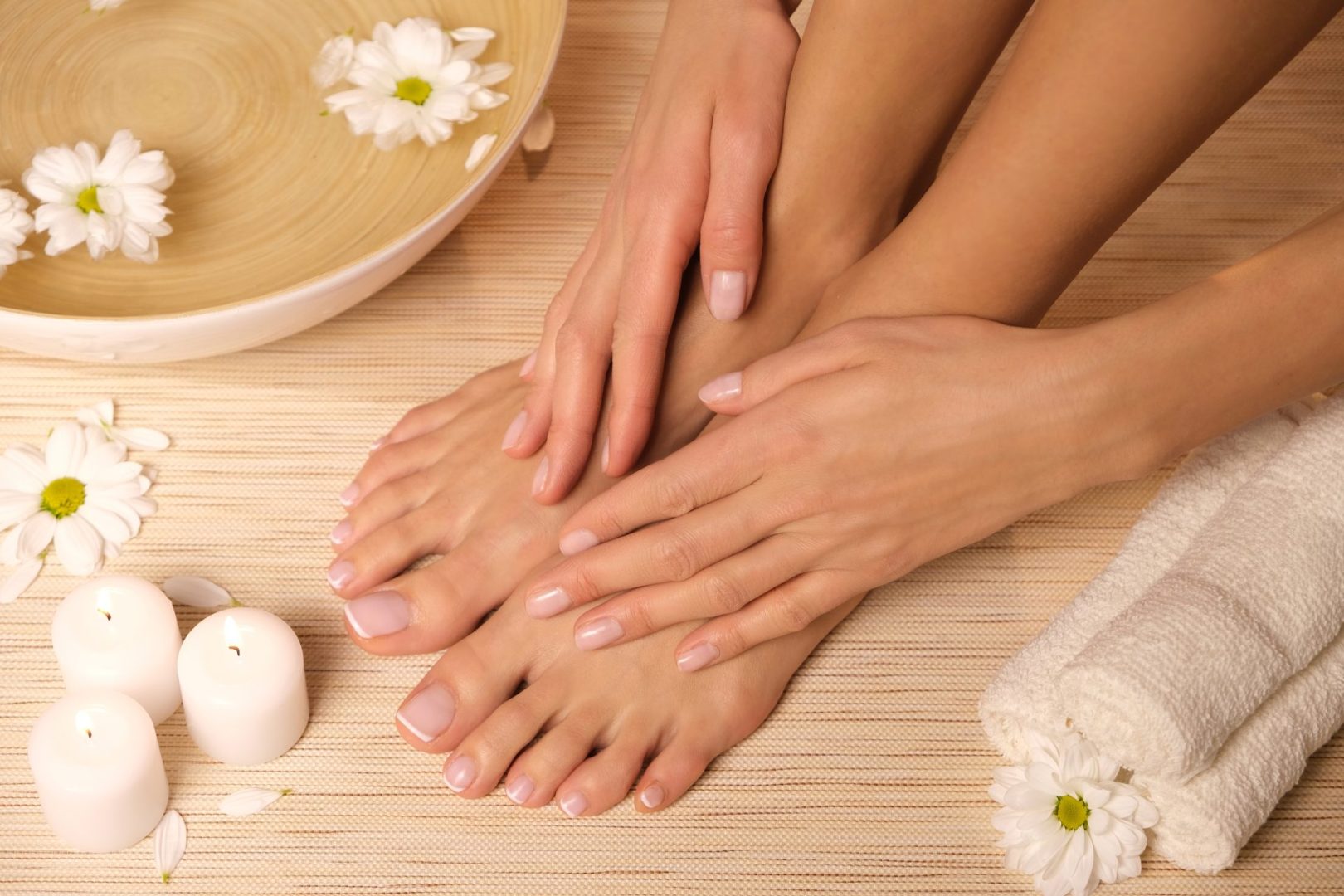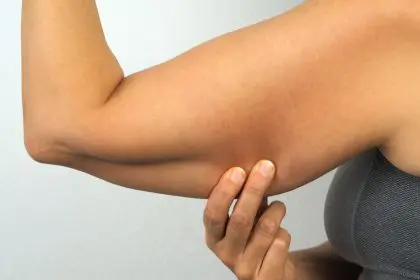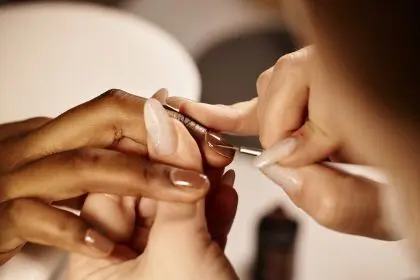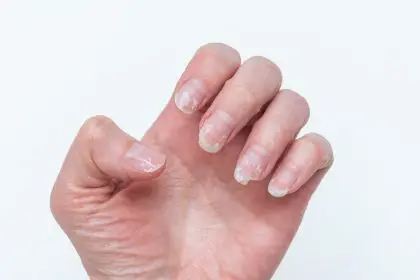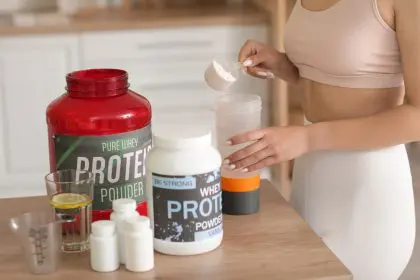Those peeling, breaking nails aren’t just a cosmetic annoyance—they might be your body’s way of signaling nutritional deficiencies that require attention. While many immediately reach for topical treatments or salon solutions, the real path to stronger nails often begins with what’s on your plate rather than what’s in your nail care kit.
Your nails can serve as windows into your overall health, changes in nail appearance—whether it’s brittleness, ridges, unusual coloration, or even those mysterious white spots—often reflect what’s happening internally.
The good news? Many nail issues can be addressed through targeted nutrition, potentially transforming weak, brittle nails into stronger, healthier ones within a matter of months. Understanding which nutrients your nails crave most can make all the difference in their appearance and strength.
Why your nail health matters beyond manicures
While perfectly polished nails might be the goal for aesthetic reasons, nail health serves a much deeper purpose. The condition of your nails can provide early warning signs of various health concerns ranging from minor deficiencies to more serious conditions.
Significant changes in nail appearance should never be ignored, white spots might indicate zinc deficiency, while very pale nails could suggest anemia. Yellowing can signal fungal infections, and in rare cases, dramatically changed nail beds can be associated with heart or lung conditions.
This is why addressing nail health concerns involves more than just cosmetic fixes—it requires looking at the nutritional foundation that supports nail growth and strength from within.
Food first: why whole foods trump supplements for nail health
When it comes to improving nail health, nutrition experts overwhelmingly recommend addressing deficiencies through diet before turning to supplements. Whole foods provide vitamins and minerals in their most bioavailable forms, meaning your body can absorb and utilize them more effectively than isolated supplements.
The matrix of nutrients in food works synergistically, for instance, the iron in spinach is better absorbed when consumed with vitamin C-rich foods like bell peppers. These natural combinations are difficult to replicate in supplement form.
However, there are exceptions to the food-first approach. People with certain health conditions, those with restrictive diets like veganism, or individuals with diagnosed absorption issues may benefit from targeted supplementation. The key is identifying your specific needs, ideally with professional guidance.
Biotin: the building block for keratin production
Biotin stands as perhaps the most renowned nutrient for nail health, earning its reputation through its crucial role in keratin production—the very protein that forms your nails.
A biotin deficiency can manifest as brittle nails that easily split and peel. While true biotin deficiency is relatively rare in the general population, supplementation has shown promising results for nail strength in multiple studies.
The National Institutes of Health recommends an intake of 30 micrograms daily for women aged 19 and older. You can boost your natural biotin intake by incorporating egg yolks, organ meats, nuts, seeds, salmon, and avocados into your diet.
For those considering supplements, biotin is generally considered safe even at higher doses, but excessive amounts won’t necessarily produce better results. Most nail-focused supplements contain between 2,500 and 5,000 micrograms—significantly more than the daily requirement.
Iron: the oxygen transporter for nail growth
Iron plays a vital role in transporting oxygen to all cells in your body, including the nail matrix where nail growth begins. Without sufficient iron, your nails may become brittle, thin, or develop a concave shape known as koilonychia or “spoon nails.”
Women of reproductive age are particularly susceptible to iron deficiency due to menstrual blood loss. The recommended daily intake is 18 milligrams for women aged 19-50 and 8 milligrams for those over 51.
Iron-rich foods include red meat, chicken, fish, dark leafy greens like spinach and kale, beans, and lentils. Plant-based iron sources are better absorbed when paired with vitamin C-rich foods or a squeeze of lemon juice.
If blood tests confirm an iron deficiency, your healthcare provider might recommend a supplement. However, iron supplements should never be taken without confirmation of deficiency, as excess iron can cause serious health problems.
Vitamin B12: the cellular health supporter
This critical vitamin plays a significant role in red blood cell formation and neurological function. Since red blood cells carry oxygen to all tissues, including your nail beds, adequate B12 is essential for nail growth and strength.
B12 deficiency can result in entirely blue nails, pigment changes, or brittle nails with rounded or curved edges. The daily recommended amount for adults is 2.4 micrograms, found predominantly in animal products like meat, fish, eggs, and dairy.
Vegetarians and especially vegans face higher risks of B12 deficiency and may need supplementation. Many plant-based milks and breakfast cereals come fortified with B12, offering alternatives for those who avoid animal products.
Older adults also face increased risk of B12 deficiency as absorption efficiency declines with age. If you notice persistent nail problems alongside fatigue or tingling in extremities, request a B12 test during your next medical checkup.
Zinc: the mineral behind white spot prevention
Those mysterious white spots that occasionally appear on nails are often attributed to zinc deficiency. While minor injuries can also cause these marks, consistent spotting across multiple nails suggests nutritional factors may be at play.
Zinc contributes to cell division and protein synthesis—both critical for nail growth. The recommended daily allowance is 8 milligrams for women, found in oysters, red meat, poultry, beans, nuts, and fortified breakfast cereals.
Zinc works in tandem with other nutrients like vitamin A and omega-3 fatty acids, This is why a varied diet typically provides better results than isolated zinc supplementation.
If your diet lacks zinc-rich foods or you have conditions that affect zinc absorption, targeted supplements might help. However, excessive zinc can interfere with copper absorption and immune function, highlighting the importance of appropriate dosing.
Magnesium: the overlooked nail strengthener
While not as frequently discussed for nail health, magnesium supports protein synthesis and hundreds of enzymatic reactions in the body, many of which indirectly affect nail strength and growth.
Ridged or grooved nails can sometimes indicate magnesium deficiency. Women aged 31 and older should aim for approximately 320 milligrams daily.
Excellent food sources include legumes, nuts, seeds, whole grains, and dark green vegetables. Magnesium absorption can be hindered by certain medications and health conditions, potentially necessitating supplementation for some individuals.
Magnesium is particularly interesting because it works closely with calcium and vitamin D, This trio of nutrients supports not just nail health but bone health as well.
Vitamin C: the collagen catalyst
While often associated with immune health, vitamin C plays a crucial role in collagen production. Collagen provides structure to many tissues, including those surrounding and supporting nail growth.
Without adequate vitamin C, nails may become brittle and develop hangnails more frequently. Women aged 19 and older should consume at least 75 milligrams daily.
Citrus fruits like oranges and grapefruits are well-known sources, but many other foods provide substantial vitamin C, including bell peppers, strawberries, kiwi, broccoli, and tomatoes.
Vitamin C supplements are generally considered safe, though high doses can cause digestive discomfort in some people. Since vitamin C is water-soluble, excess amounts are typically excreted rather than stored in the body.
Calcium: not just for bones
While calcium’s role in bone health receives most attention, this mineral also contributes significantly to nail structure and strength. Low calcium can lead to dry, brittle nails prone to breaking.
Most adults need between 1,000 and 1,200 milligrams of calcium daily. Dairy products provide readily available calcium, but plant sources include leafy greens like kale and collards, fortified plant milks, tofu made with calcium sulfate, and almonds.
The relationship between calcium and nails is often overlooked, many people struggling with consistently brittle nails show improvement when addressing calcium intake, particularly when combined with adequate vitamin D for proper absorption.
Vitamin E: the protective antioxidant
This fat-soluble vitamin serves as an antioxidant, helping protect cells from damage. For nails specifically, vitamin E supports healthy blood circulation to the nail bed and may help prevent yellow nail syndrome.
Women aged 14 and older should aim for approximately 15 milligrams daily. Rich sources include sunflower seeds, almonds, spinach, avocados, and plant oils like wheat germ oil.
Vitamin E supplements should be approached cautiously, as high doses can interfere with blood clotting and interact with certain medications. For most people, dietary sources provide sufficient amounts without these risks.
When supplements make sense for nail health
While obtaining nutrients from food remains the gold standard, certain circumstances warrant consideration of supplements:
Diagnosed deficiencies confirmed through blood testing can be addressed more rapidly with targeted supplementation alongside dietary changes.
Restrictive diets such as veganism may create challenges in obtaining certain nutrients like B12 and iron from food alone.
Absorption issues related to conditions like celiac disease, Crohn’s disease, or gastric bypass surgery can limit nutrient uptake from food.
Seasonal challenges in some regions may limit access to fresh fruits and vegetables year-round.
The decision to supplement should ideally involve healthcare guidance, what works for one person may not work for another, and some supplements can interact with medications or exacerbate certain health conditions.
For those who do opt for supplements, multi-nutrient formulations specifically designed for hair, skin, and nails often combine key ingredients like biotin, zinc, and vitamins C and E in appropriate ratios.
The patience principle: setting realistic expectations
Perhaps the most important thing to understand about nutritional approaches to nail health is the timeline. Nails grow slowly—approximately 3.5 millimeters per month on average. This means that changes implemented today won’t be visible overnight.
It takes about six months for a fingernail to grow from base to tip, this means you need to commit to nutritional changes for at least three to six months before evaluating their effectiveness.
This growth cycle also explains why damaged nails can’t be “repaired”—they can only be replaced by new, healthier growth. The focus should be on nurturing the nail matrix where new cells form, rather than expecting existing damaged nails to transform.
Beyond nutrition: complementary approaches to nail health
While nutrition forms the foundation of nail health, complementary strategies can enhance results:
Proper hydration supports all cellular functions, including those involved in nail growth. Aim for adequate water intake throughout the day.
Minimizing harsh chemical exposure protects nails from unnecessary damage. Consider wearing gloves for cleaning and dishwashing.
Gentle nail care practices like avoiding aggressive filing and choosing acetone-free polish removers help maintain nail integrity.
Moisturizing cuticles regularly prevents hangnails and supports the seal that protects the nail matrix from infection.
By combining nutritional strategies with these protective measures, you can create optimal conditions for growing stronger, healthier nails from the inside out.

